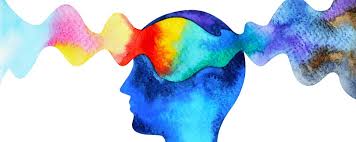
Post-traumatic stress disorder (PTSD) is a condition that happens to someone who has suffered from traumatic stress /event for example ; death of loved ones ,sexual abuse , divorce, or road accidents , etc
Many people suffering from traumatic event will experience continuous negative emotions, thoughts and memories in the form of flashbacks.
Most of people feel better with time. When these negative emotions continue to linger on , and start interfering with someone’s daily routine , then they might be suffering from PTSD.
PTSD is caused when someone has been exposed to actual or threatened;
They can be exposed in one of the following ways:
Examples of traumatic events can include:
Many people can experience negative emotions like grief, sadness, anxiety, guilt and anger after a traumatic experience.
This does not mean that they have PTSD. Person suffering from it must have following symptoms ;
Memories: Repeating unwanted memories of the event, also called as intrusive thoughts that becomes very overwhelming and distressing.
Dreams: Having vivid dreams or nightmares about the event.
Dissociative reactions Suddenly feeling or acting as if the traumatic event is happening again and again( flashbacks).
Physical and psychological distress: Starting to have physical symptoms (e.g. fast breathing, rapid pulse), when exposed to things or even memories that remind you that event.
Dissociative amnesia: Being unable to remember most parts of the traumatic event.
Detachment: Feeling detached to everyone around.
Avoiding talking and thinking: Deliberately not wanting to speak or think about the traumatic event.
Avoiding associations: Avoiding thoughts, memories , feelings, things, and places associated with the traumatic event.
Negative beliefs: Always thinking negatively about yourself, others or the world.
Blaming : Blaming yourself or other people for the event.
Negative emotions: Consistently experiencing horror, fear, anger, guilt or shame.
Loss of interest: Losing interest in previously enjoyable activities.
Unable to feel positive : Not being able to experience happiness or loving feelings.
Hypervigilance :Being always more aware of what’s happening around you and being unable to relax or anticipating something bad would happen.
Being startled: Easily having startled responses , overreacting to noises or movements.
Difficulty concentrating: Finding it so hard to focus on simple tasks.
Difficulty sleeping: Finding it so difficult to fall asleep and stay asleep. Especially due to recurrent nightmares or vivid dreams.
Irritability: Having outbursts where you are verbally or physically aggressive towards people or things.
Recklessness: Doing dangerous or self-destructive things.
There are different treatment options for PTSD. That includes ;
Psychotherapies for PTSD focus on the traumatic experience. They will help you with the following things:
Other therapies for PTSD include:
It’s a talking therapy that helps you to change your ways of thinking. This can help you to feel safe and secure.
This technique uses eye movements to help the brain process traumatic memories.
You will be asked to recall the traumatic event in detail and how it makes you think and feel.
EMDR should be delivered by a trained practitioner. EMDR is done over 8-12 sessions that can last from 60-90 minutes.
If you have tried therapies for PTSD and these are not working,
Selective serotonin reuptake inhibitors (SSRIs) can help to reduce PTSD symptoms.
If SSRIs also don’t work , you may be offered other medications such as antipsychotics or benzodiazepines to reduce fear related symptoms and improve sleep.
Some people can develop complex post-traumatic stress disorder (complex PTSD). This is caused by repeatedly experiencing an event or series of events that are extremely threatening or horrifying. These events can happen during childhood or as an adult. E.g. ongoing sexual abuse in childhood.
Often these events are difficult or impossible to escape from or avoid. For example:
They suffer from symptoms like PTSD but more severe in intensity.
Lack of trust in other people is the hallmark and also regarding the world Treatment is aimed often longer to allow them to develop a secure relation with others and themselves.
It is done in three stages:
In the stabilisation stage, you will start learning to trust your therapist, understanding and controlling your feelings of distress and detachment.
Stabilisation helps you to ‘disconnect’ your feelings of fear and anxiety symptoms from the memories and emotions that produce them.
Therapy that focuses on trauma, including EMDR can help you to process your traumatic experiences.
Psychodynamic psychotherapy can also be helpful.
Reintegration is a way to integrate you into a routine way of life where you no longer see the world and people around you as a threat.
Reintegration will help you to:
Antidepressants or other medication can be used along with psychotherapy
If you have complex PTSD, it can be helpful to try and do normal things that have nothing to do with your past experiences of trauma. This could include:
These things will help you to slowly gain the trust in people and world around you.
Best psychiatrist in Lahore,
387-E Khayaban-e-Firdousi, near Allahu chowk, Block E Phase 1 Johar Town, Lahore, Punjab 54782
Days and Timings:
Monday 03:00pm to 10:00pm
Wednesday 03:00pm to 10:00pm
Thursday 03:00pm to 10:00pm
Friday 03:00pm to 10:00pm
Sunday 03:00pm to 10:00pm
For appointment: 0321 1439754
CENTRAL HOSPITAL, GUJRANWALA
Days and Timings:
Saturday 02:00pm to 09:30pm
For appointment:
055-4277072
055-4277073
055-4277074
ONLINE VIDEO CONSULTATION
For appointment: +92 321 1439754